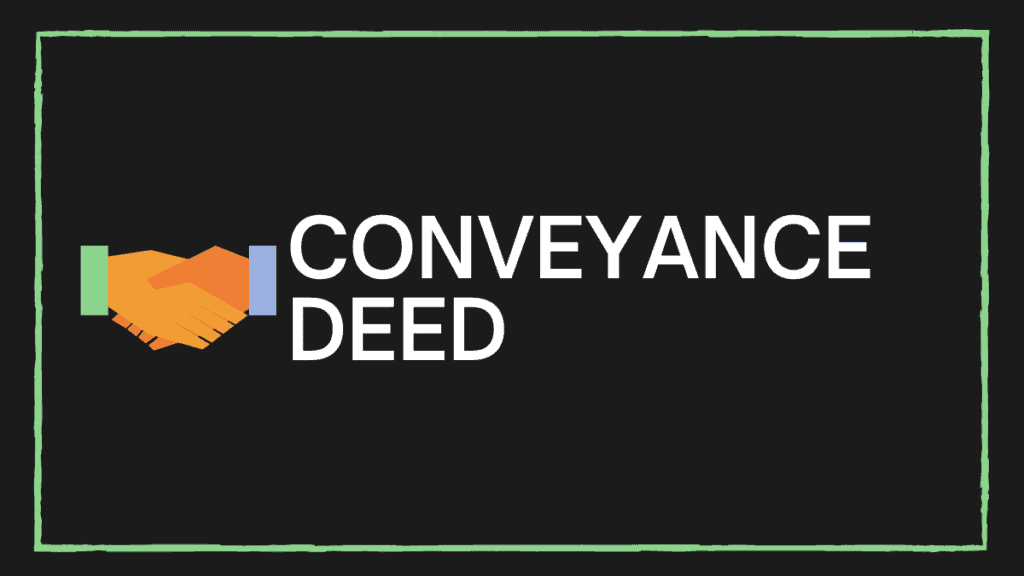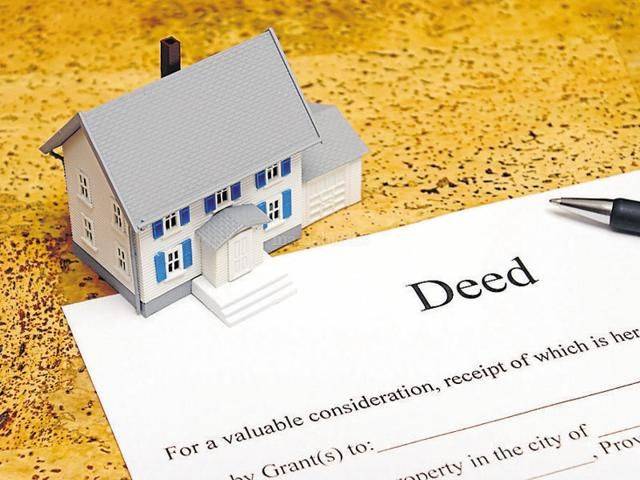
When it comes to legal issues and paperwork, you have to be meticulous. Even the slightest mistake could lead to a huge loss, especially when you’re dealing with buying or selling property. The last thing you’d want is to get stuck in a legal trap. Before you sign a conveyance deed, there are some things you should keep in mind.
But first, in order to understand the meaning of a conveyance deed, it is important to know what a deed is.
So what is a conveyance deed? A conveyance deed is a legal document that includes all valid terms of the contract and is sealed, signed, and delivered to all parties of the contract (the buyer and the seller). It is mandatory that both the parties involved in the contract must sign the deed. This brings us to our next question.
Conveyance Deed Meaning: What Does It Mean?
The meaning of conveyance deed, in legal terms, the conveyance is the process of transferring property, rights, ownership, assets, title, etc. from one person to another. A deed refers to an instrument, like a written legal document that is signed by all the parties of a binding contract that is enforceable in a court of law. In such a case, the assets that are under consideration are immovable, such as real estate properties. A sale or purchase of an asset is never complete without a valid contract, which in this case is a conveyance deed.
So, in a conveyance deed, the owner of the property transfers all their legal rights to the buyer, against valid terms and conditions. A conveyance deed implies that the owner states that all authority and ownership of a property in question has been transferred to the buyer.
What is the Conveyance Deed: The Types!
Conveyance deed on freehold property
- The buyer gets full authority to enjoy the property
- The final document is given to the buyer
Conveyance deed on leasehold property
- The legal owner has rights to everything within the four walls of the property
- It does not include the external or structural walls
- The landlord will be the owner of the structure and common area
Conveyance deed subjected to mortgage
- Buyer can enter the property from time to time
- Enjoy the building as well as its premises
Relinquishment deed
- Takes place when the transfer of ownership takes place with common property
- The transfer or release of rights, titles, or interests of one person in favor of other legal heirs
Gift deed
- Takes place when it is gifted property to the grantee by a grantor
Conveyance Deed: What Does it Include?

A conveyance deed is required to contain the following-
- The defined boundary of the property or of the land
- Any other rights (if applicable) appended to the land or to the property
- A title chain of all the owners till the seller at present
- The delivery method to the buyer
- A memo of consideration stating how it has been received
- Any terms and conditions regarding the ownership rights
How To Proceed With The Conveyance Deed?
- It must be written on non-judicial stamp paper.
- It is to be registered at the office of the local sub-registrar.
- The deed is verified and the registration is approved by the sub-registrar.
- Once registered, the stamp duty and registration are to be paid.
- The conveyance deed is ready!
(Note– The stamp duty and registration charges differ state-wise)
Document Requirement For The Conveyance Deed
- Sales agreement (provided while making the deed)
- Mutation entries (indicate the transfer of ownership of a property)
- Location plan of the land
- Survey plan and a layout plan (from the revenue department and the local authority respectively)
- Certificate of architect
- Urban ceiling act certification
- Building or structure plan by an appropriate authority
- Commencement and completion certificate
- Occupancy certificate (exempted if not applicable)
- Stamp duty payment proof
- Development agreement or power of attorney or agreement for sale, if executed by the seller
- Draft of conveyance deed
Difference Between a Conveyance Deed And Sale Deed
A conveyance deed is sometimes confused with a sales deed. The concept might be similar, but they are two different things. It would be appropriate to say that- every sale deed is a conveyance deed, but not all conveyance deed is a sale deed. A few differences between a conveyance deed and a sale deed are mentioned below-
- A sale is when the seller sells the property to a buyer in exchange for consideration, that is it involves some kind of consideration, either monetary or non-monetary. But a conveyance deed may include gifts, mortgage, exchanges, etc., so it may or may not involve monetary consideration.
- A sale deed is needed when a seller sells the property to the buyer in exchange for consideration. On the other hand, a conveyance deed is the transfer of property rights, titles, and ownership from one person to another, not necessarily always for consideration.
- A sale deed is a permanent transfer of rights, title, or ownership to the seller whereas the transfer of ownership in case of a conveyance deed is limited.
- The buyer becomes the ultimate user of the property and has the right to sell it or use it in case of a sale deed, but it is not so in the case of a conveyance deed.
Key Points To Remember
- The seller must ensure that the property is free of any legal encumbrance.
- The seller must clear the mortgages on the property.
- The exact date of transfer of property to the buyer must be clearly mentioned in the deed.
- A minimum of two witnesses is required to sign the deed.
To Summarize
We hope the blog above has helped you understand the basics as to what, how, and why of the conveyance deed. There are many legalities in the process that one must make sure to keep an eye out for and be on the right side of the needful.
Conveyance Deed FAQs:
1. What is the difference between a deed and a conveyance?
A deed refers to an instrument, like a written legal document that is signed by all the parties to a contract (the owner and buyer). A conveyance refers to the process of transferring ownership of the property to a buyer.
2. What if the conveyance deed is not done?
If there is no deemed conveyance, it means that the society does not have legal rights or ownership of the land. A conveyance deed is essentially one wherein the seller transfers all rights to legally own, keep and enjoy a particular asset.
3. What is the difference between lease deed and conveyance deed?
A conveyance deed can be on a leasehold property. It means that the legal owner has rights to everything within the four walls of the property.
4. What do conveyancing deeds show?
A conveyance deed means that the seller has signed a document stating that all authority and ownership of the property in question has been transferred to the buyer.
5. Should the conveyance deed be registered?
The conveyance deed must be registered at the local sub-registrar office to make it a valid contract. If it is not registered, then the buyer has the chance of losing the property.
6. Are all conveyance deeds sale deeds?
No, all sale deeds are conveyance deeds but the reverse is not true.






